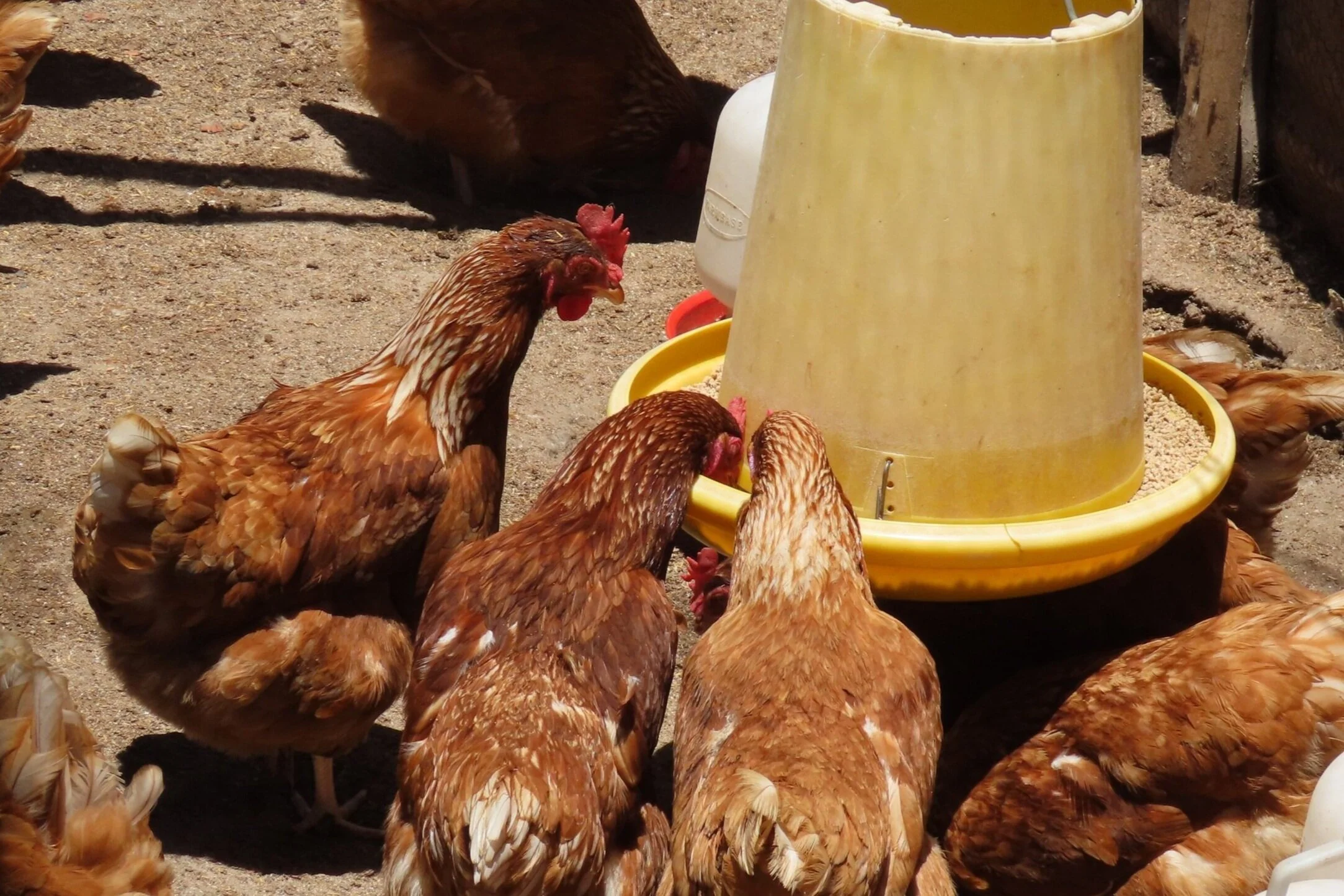Feeding Plan
Chick Mash
Feed from Day 1 to Week 8
Total feed consumption 2.1 kg at 8 weeks per chick.
At week 8 mix with BELMILL Growers Mash to allow smooth transition to growing phase.
Growers Mash
Feed from week 8 to the point hens start laying eggs (16-18 weeks)
Total feed consumption 6.5 Kgs per bird for a period of 8 weeks.
At week 18 mix with BELMILL Layers Mash to allow smooth transition to laying phase.
Layers Mash
Feed from commencement of laying until the end of their productive life.
Feed consumption will gradually increase to 140 grams per bird per day. The hens will continue to lay efficiently until 85-89 weeks. The production will then taper where the cost of feeding may exceed the egg production.
Management
In addition to providing quality feeds to your livestock, good management is critical in achieving the optimum performance on your farm. From our many years of experience, we have developed the following guidelines to outline the basic management requirements to improve the performance of your farm.
Day old chicks
Source strong healthy layer pullets (layer chicks) from a reputable hatchery.
Chicks should be checked and weighed. A good chick should weigh around 45 grams on arrival. It should have clear bright eyes, well developed feet, soft and well hydrated skin. The body should be dry with temperature of around 35.5 c and above all a contented happy chirp.
Brooder
The newly hatched chick cannot regulate body temperature due to inadequate feather cover and lower feed intake. Brooding is the provision of supplementary heat in the first 4 weeks.
Brooder house should be cleaned and disinfected 1-2 weeks prior to the arrival of the chicks (if used before)
Litter placement done 48 hours before the chicks arrival. Good litter material should be highly absorbent and 5-7 cm thick to prevent ingestion by the chicks i.e. wood shavings.
Various heat sources available are infrared bulbs, charcoal burner, gas brooder etc.
Place a chick guard around the brooding area to confine the chicks to the heat source for the first week.
Chick mash
The newly hatched chick requires very specific nutrients to develop its gastro intestinal tract and immune response system. The feed ingredients need to be hygienic and easily digestible. BELMILL Chick Mash is ideal for young chicks.
Ensure provision of clean drinking water fortified with electrolytes or stress pack.
Initially, the chick mash should be presented on a flat tray or paper to encourage the chicks to start eating.
Follow up feed intake by checking the crops, 95% of the crops should be full within 24 hour
pay extra attention to feed intake after four days when many disturbances occur
try to reduce the percentage of small chicks by seven days by giving extra attention to encourage feed intake.
Growers
This is a critical period when the birds need to gain the required body weight for laying.
Proper hygienic condition should be maintained in the shed.
Dusting or spraying should be done to control the external parasites.
Optimum floor space, feeder and drinker space should be provided.
Clean and fresh water should be provided daily.
Aim for uniformity of the flock. Sample weights should be taken once a week to monitor progress.
Their feeding program should be carefully managed so that they do not gain weight excessively and reach sexual maturity prematurely.
1.5 kg weight should be attained at point of lay. Underweight or overweight birds affects egg production
Litter should be replaced regularly.
Layers
Quality egg production relies on good management practices, quality feed and quality water. Happy chicken lay more eggs and are more likely to stay healthy therefore the following practices should be observed.
Ensure adequate air flow to manage heat stress, moisture and prevent build up of ammonia. Ammonia damages the respiratory system and can cause blindness. This will directly lead to reduced egg quality and production.
Light management. The length of time that pullets and hens are exposed to light affects growth in pullets and egg production in layers. In general, pullets require less daylight, and so can be raised on a shorter photo period. Longer daylight periods are used to stimulate the on-set of lay in fresh layer hens. Light management will determine the start of egg production, improve the quality of the shell and the size of the eggs, and maximize feed efficiency . Ideally, light duration should reach 16 hours by 30-35 weeks of age.
Litter should be kept dry. Wet litter should be removed regularly.
Weak, non-layers and poor layers should be removed from the main flock.
Egg quality should me monitored. (size, shape, color and strength of egg shells and color of the egg yolk).
In deep litter system nests should be placed the dark areas of the house. Litter material should be replaced weekly to avoid contamination of the eggs.
De-beak your layer chicken at the onset of egg laying to prevent egg pecking.
Collect eggs 3 times a day to prevent breakages and to keep them clean.
A good laying hen has a bright red comb and wattle.




